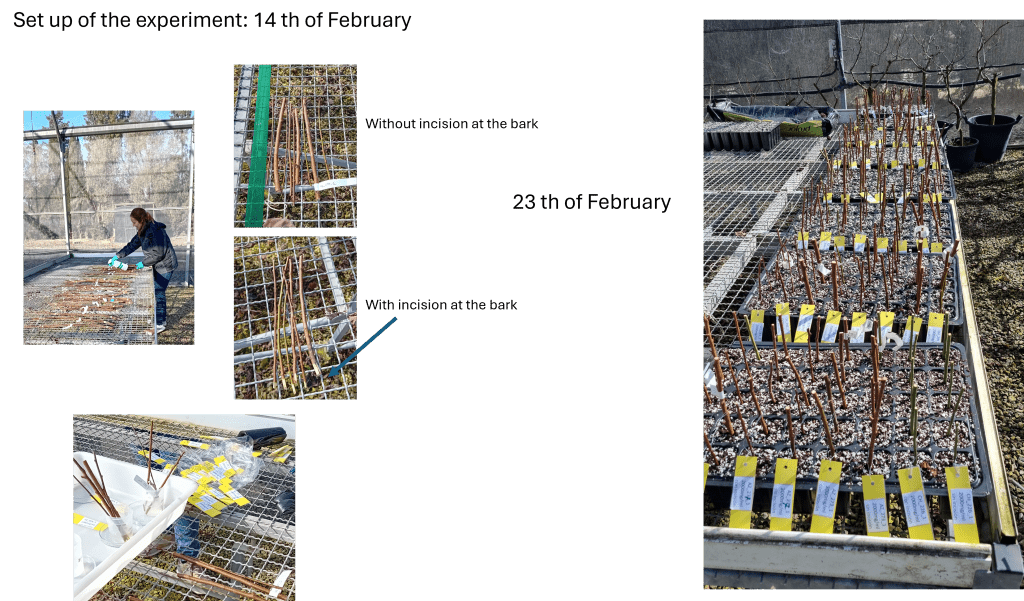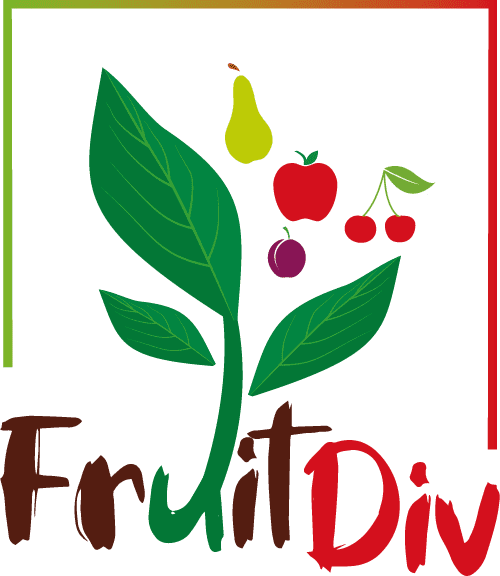In Crop Wild Relatives (CWRs), vegetative propagation through rooting is a key trait under selection during fruit tree domestication. Cultivated apricots have a rather low hardwood cutting success rate, reaching hardly 10%. FRUITDIV’s WP3 aims to conduct ex situ phenotyping on CWRs for traits important for different end users and resilient fruit production systems.
In the first semester of FRUITDIV, consortium partners at INRAE and CITA assessed the ability to root of the Prunus armeniaca wild relatives.
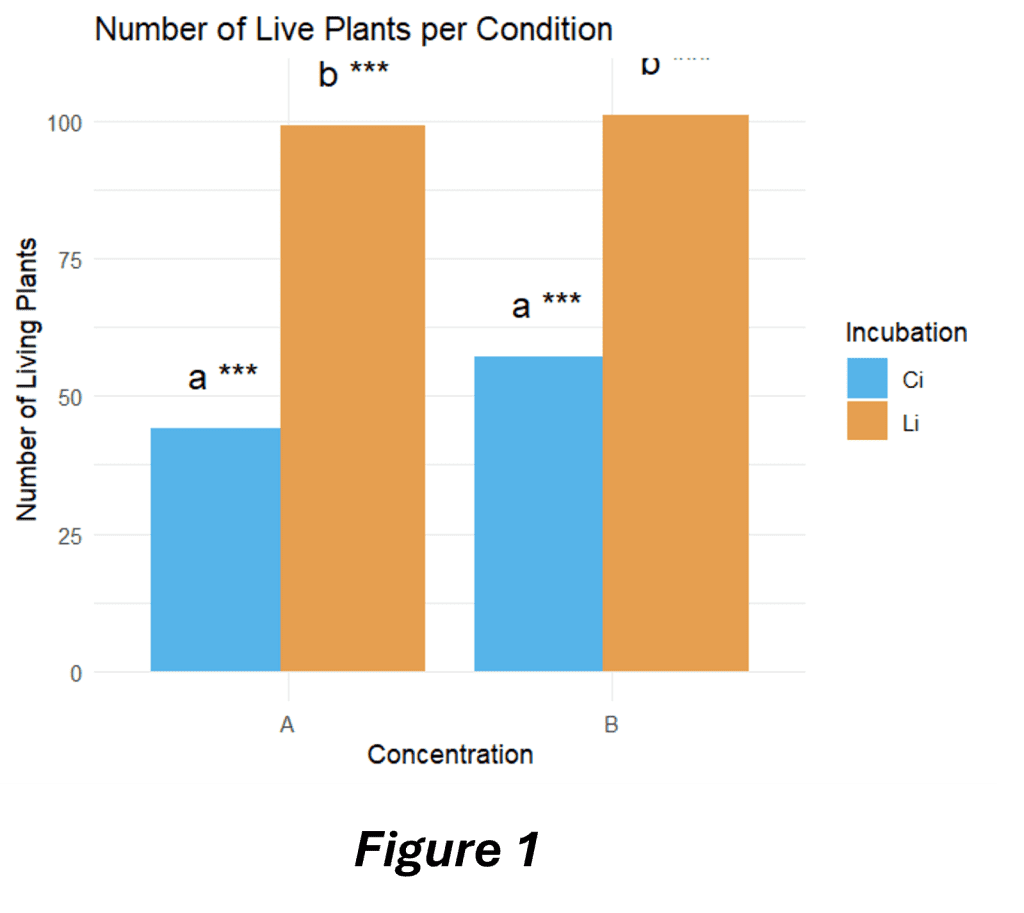
At INRAE_BFP (Bordeaux, France), a total of 5,029 cuttings were processed for over four months. They come from 333 Armeniaca genotypes: 286 P. armeniaca and the remainder being P. sibirica, P. mume, P. mandschurica and P. brigantina. On average, four cuttings per genotype were tested in each of the four conditions that combined two concentrations of IBA (indole-3-butyric acid) (see Figure 1, A for 2g/L and B, for 3g/L), a root growth-inducing hormone, and two IBA incubation times (short, Ci and long, Li).
The results showed that 131 genotypes were able to root at least once in the four conditions tested. They produced 301 viable plants, resulting in an overall success rate of 6%. No significant effect of the hormone concentration was observed while a longer incubation, up to one minute, doubled the rooting rate.
Regarding the “Super-rooting” genotypes, thirteen of the fifteen most successful are from Kazakhstan (KZ) (see Figure 2). Of the 131 rooting genotypes, 64 are from Kazakhstan, indicating a prevalence in rooting ability for this gene pool. It was thus hypothesized that valuable candidate genes for rooting ability are present in the CWR collection.
Moving forward, Genome-Wide Association Studies will be performed to identify these genes. Nevertheless, one or two more years of tests are needed to confirm those promising but preliminary results.
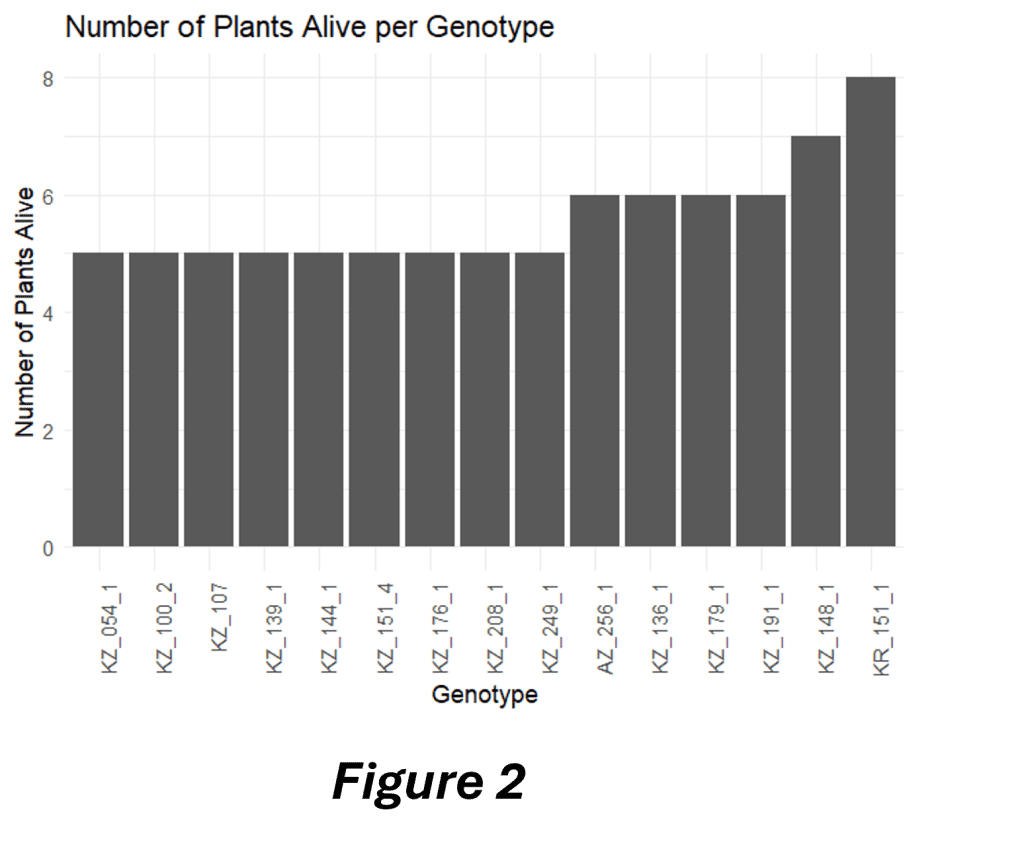
In parallel, at CITA (Saragossa, Spain), a total of 232 cuttings were processed for over four months. They come from 27 Armeniaca genotypes from the wild apricot core collection at INRAE. Between 3 and 7 cuttings per genotype were tested in a concentration of IBA (indole-3-butyric acid) and two cutting methods (with incision and without incision of the bark at the base of the cuttings). No significant effect of the incision was observed at 2000 ppm of IBA (see Figure 3a). The rooting success rates were 15% for cuttings with incision and 9% for cuttings without incision (see Figure 3b).
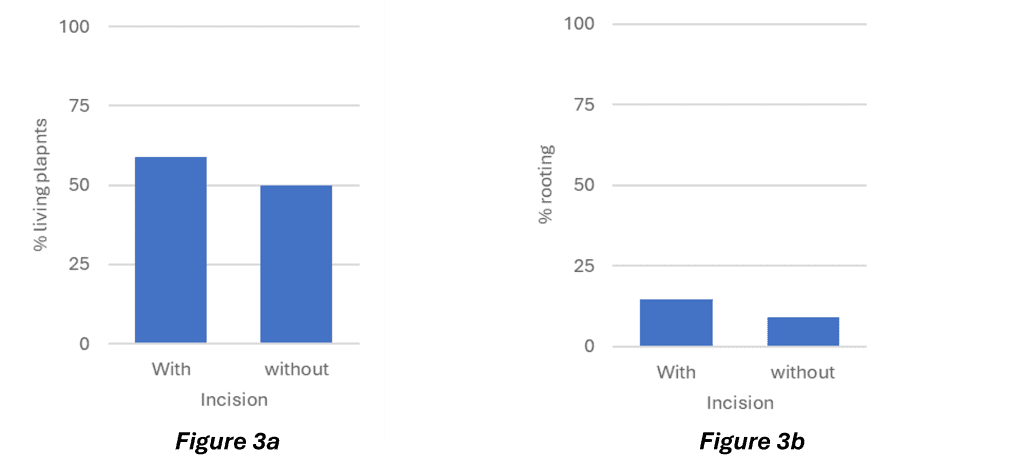
The best results were obtained for four genotypes from Kazakhstan (KZ) with high values of rooting percentages, followed by two from China (CH), three from Uzbekistan (UZ), and one for Kyrgyzstan (KR), showing the strong influence of the genotype in rooting (see Figure 4).
In the next year, two conditions will be selected for rooting, and a comparative analysis will be made of cutting vs grafting ability with the same genotypes.
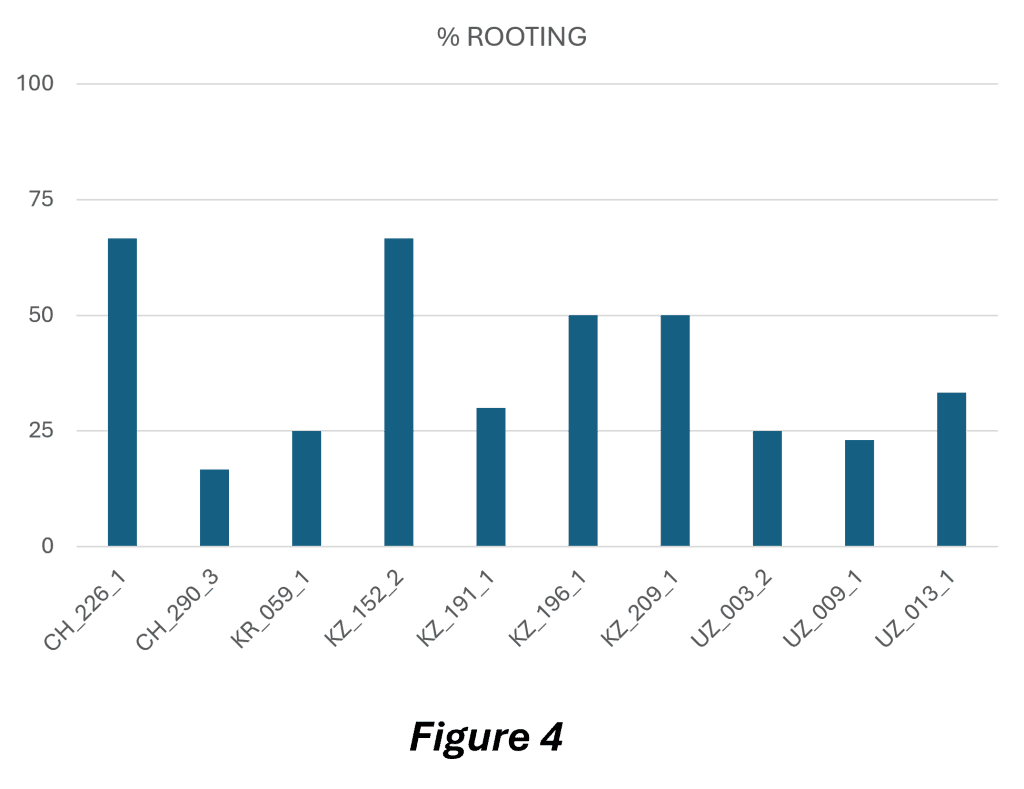
Experiments conducted at INRAE (Bordeaux, France)
For further information about these experiments, please contact Véronique Decroocq (INRAE) : veronique.decroocq@inrae.fr

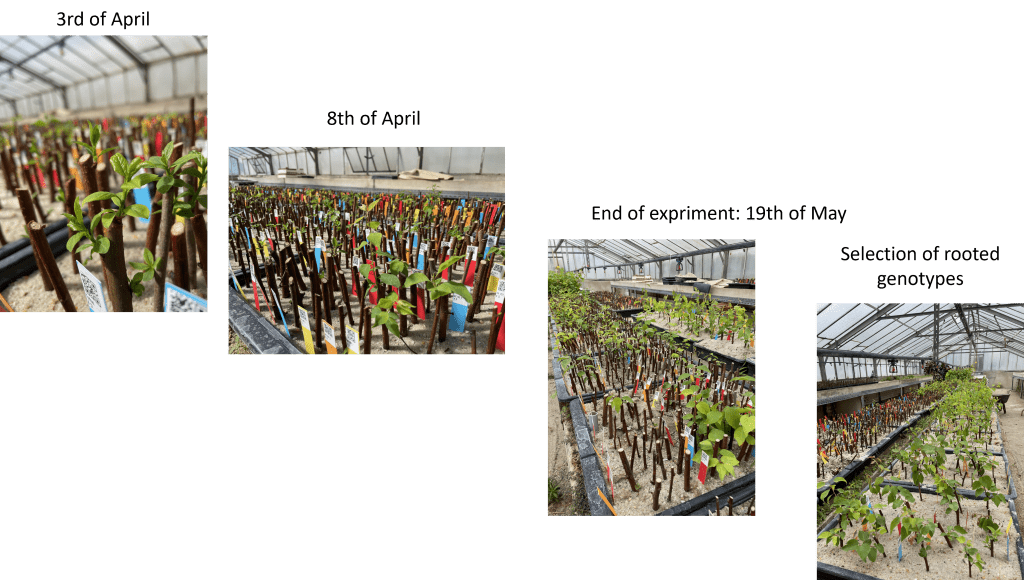
Experiments conducted at CITA (Saragossa, Spain)
For further information about these experiments, please contact Ana Pina Sobrino (CITA), apina@cita-aragon.es
